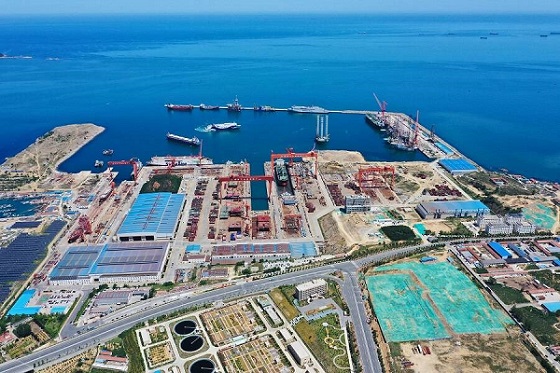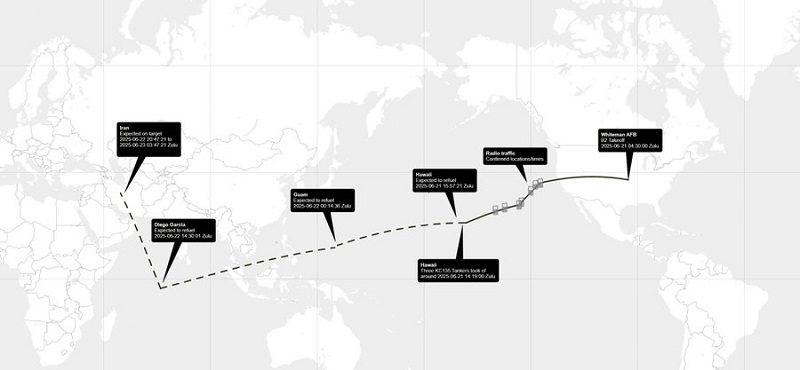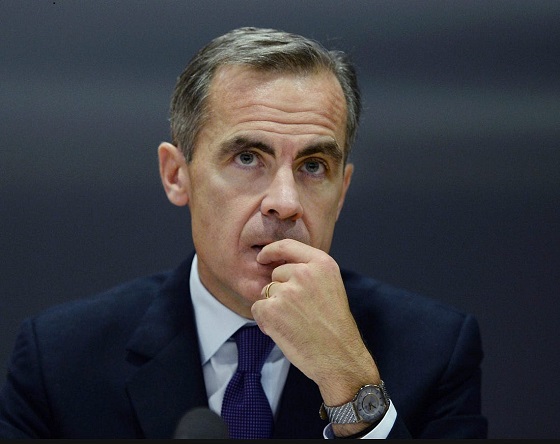International
President Xi Skips Key Summit, Adding Fuel to Ebbing Power Theories

First-ever BRICS absence deepens questions over internal CCP dissent
Chinese President Xi Jinping will skip the upcoming BRICS summit in Rio de Janeiro, the first time he has ever missed the gathering of major emerging powers—a development that will add to speculation that Xi’s power among elite Chinese Communist circles is being challenged by a faction publicly humiliated by Xi in 2022.
Beijing cited a “scheduling conflict,” according to multiple officials involved in summit planning, South China Morning Post has reported. But Xi’s absence—coming amid intensifying economic pressures and purges within the People’s Liberation Army—has triggered speculation that deeper internal political currents may be at play.
China’s delegation to Brazil will instead be led by Premier Li Qiang, marking the second time in under a year that Xi has delegated such a high-level multilateral forum. Observers note that Li also stood in for Xi at the G20 summit in India in 2023.
The BRICS platform is a key pillar of China’s push for a multipolar world, challenging the Western-led order.
The official explanation for Xi’s absence—that he has already met Brazilian President Luiz Inácio Lula da Silva twice in the past year—has done little to quell questions about the Chinese leader’s standing at home. Those concerns are being amplified by mounting signs of internal dissent within the Chinese Communist Party, as China’s economy falters and long-suppressed questions about Xi’s hardline tactics against the West, including mounting threats to invade Taiwan, gain traction with the reemergence of a sidelined political faction.
As detailed in a recent Jamestown Foundation analysis, Xi Jinping may be facing renewed political friction from within the Party’s elite ranks—specifically, the so-called Tuanpai, or Youth League faction, aligned with former president Hu Jintao and premier Wen Jiabao.
The history of the Xi-Hu rift is punctuated by a theatrical public humiliation: in October 2022, Hu Jintao was forcibly escorted from the closing session of the CCP’s 20th Party Congress. The moment was captured on live television and interpreted globally as Xi’s final symbolic purge of Hu’s faction. Hu, seated next to Xi Jinping, appeared to reach for documents on the table. Li Zhanshu, seated to Hu’s left, took the papers and placed them out of reach. Xi signaled, and two security staff approached Hu, gently lifting him from his seat and escorting him out. Hu appeared reluctant, attempting to retrieve the documents and briefly exchanging words with Xi. He also patted Premier Li Keqiang, a key figure in the Youth League faction, on the shoulder before leaving. The stunning incident lasted about 90 seconds.
Li died less than a year later, in October 2023, reportedly from a sudden heart attack while swimming in Shanghai. His unexpected death at age 68—soon after leaving office—was officially described as natural, but has fueled speculation among Chinese observers and dissidents, with some questioning the timing and circumstances.
Evidence of the Hu faction’s comeback emerged from the secretive Party retreat in Beidaihe in August 2023. According to Nikkei Asia, and later corroborated by additional sources, three senior Communist Party elders delivered pointed criticisms of Xi Jinping’s policies behind closed doors. All three had ties to the former Hu-Wen administration. Their intervention reportedly provoked visible frustration from Xi, according to individuals familiar with the meeting.
In a possible gesture of appeasement—or vulnerability—Xi has more recently echoed terminology traditionally associated with Hu’s tenure. He invoked the phrase “scientific, democratic, and law-based policymaking,” a hallmark of Hu’s governing lexicon, signaling either rhetorical triangulation or a forced concession to resurgent internal pressures.
The most striking signal of renewed factional maneuvering is the quiet reemergence of Hu Chunhua, according to Jamestown’s analysis, the protégé of Hu Jintao and Wen Jiabao once viewed as a potential future president. Xi sidelined Hu Chunhua in 2022 by excluding him from the Politburo—an unprecedented break from succession norms. But in recent months, Hu has been deployed in high-level diplomatic missions typically reserved for top officials.
In April 2024, Hu led a Chinese People’s Political Consultative Conference delegation to West Africa. The next month, he appeared at the Vietnamese Embassy to pay respects following the death of Vietnam’s former president—a role traditionally carried out by a Politburo-level official.
Xi’s sweeping anti-corruption purges in 2023—many of which targeted military figures linked to the Central Military Commission—have depleted some of his institutional backing. The Jamestown Foundation notes that these purges, rather than consolidating Xi’s grip, may have created new political openings for rivals.
Taken together with broader indicators of factional turbulence, Xi’s BRICS no-show feeds a growing intelligence narrative—shared by The Bureau’s expert sources in the United States and Taiwan—that China’s paramount leader, having consolidated power through sweeping purges, is now encountering mounting signs of blowback from within the Party.
The Bureau is a reader-supported publication.
To receive new posts and support my work, consider becoming a free or paid subscriber.
Invite your friends and earn rewards
conflict
Fordow obliterated: Israeli report confirms nuclear site inoperable
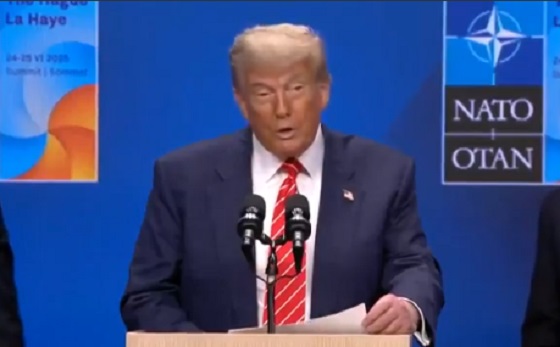
Quick Hit:
Israel confirmed Wednesday that the U.S. airstrike on Iran’s Fordow nuclear site over the weekend caused severe damage, rendering the facility “inoperable.” Israeli officials say the operation has significantly delayed Iran’s nuclear ambitions.
Key Details:
- The Israeli Prime Minister’s Office said the U.S. strike destroyed key infrastructure at Fordow and crippled Iran’s uranium enrichment capability at the site.
- The statement, delivered on behalf of the Israel Atomic Energy Commission, concluded that combined U.S. and Israeli strikes have set Iran’s nuclear weapons program back “by many years.”
- President Trump praised the success of the operation during remarks at the NATO summit in Brussels, calling it a “joint Israeli-American victory” and likening it to Israel’s decisive 1967 Six Day War.
.@POTUS reads a letter from the Atomic Energy Commission of Israel, stating that "the devastating U.S. strike on Fordow destroyed the site's critical infrastructure and rendered the enrichment facility totally inoperable." pic.twitter.com/KDFjLJ5pJf
— Rapid Response 47 (@RapidResponse47) June 25, 2025
Diving Deeper:
On Wednesday, the Israeli government released an official statement confirming that a U.S. airstrike on Iran’s Fordow nuclear facility had effectively shut down operations at the controversial site. The announcement came shortly after President Donald Trump previewed the findings during a press conference at the NATO summit in Brussels, noting that Israeli intelligence would provide details on the mission’s results.
“The devastating U.S. strike on Fordow destroyed the site’s critical infrastructure and rendered the enrichment facility inoperable,” read the statement issued by Prime Minister Benjamin Netanyahu’s office on behalf of the Israel Atomic Energy Commission. The report concluded that the joint American and Israeli military campaign had “set back Iran’s ability to develop nuclear weapons by many years.”
Officials added that this delay in Iran’s nuclear capabilities could continue “indefinitely,” provided Tehran is prevented from obtaining new sources of nuclear material.
Fordow has long been one of the most heavily fortified and secretive components of Iran’s nuclear program, buried deep beneath a mountain near the city of Qom. Intelligence analysts had previously identified it as a central hub for uranium enrichment—one of the final steps in developing a nuclear weapon.
President Trump, who authorized the airstrikes over the weekend, hailed the mission’s outcome as a strategic triumph. Referring to the brief but intense military confrontation as the “12 Day War,” Trump drew historical parallels to Israel’s famed Six Day War in 1967, underscoring the speed and precision of the operation.
“This was a joint Israeli-American victory,” Trump said. “And we achieved it without a prolonged conflict or massive deployment.”
The Fordow strike followed a series of precision attacks by Israel on other elements of Iran’s nuclear and military infrastructure. Together, the coordinated efforts appear to have dealt a major blow to Tehran’s nuclear ambitions, though experts caution that Iran’s response in the coming weeks remains uncertain.
The Israeli report marks the first formal assessment from a government directly involved in the strikes and is likely to shape future international discussions on Iran’s nuclear path.
conflict
Despite shaky start, ceasefire shows signs of holding
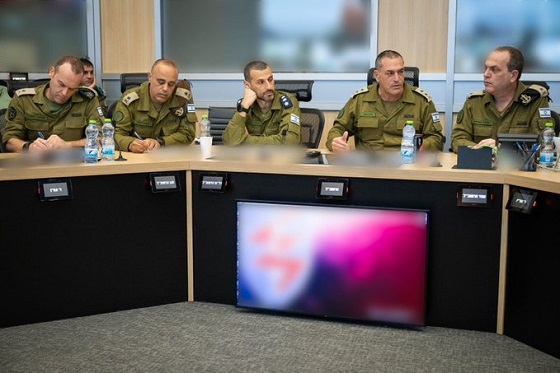
Chief of the General Staff LTG Eyal Zamir during a situational assessment following the beginning of the ceasefire with Iran
Quick Hit:
A fragile ceasefire between Israel and Iran appeared to hold Tuesday after early strikes from both sides threatened to unravel it. President Trump, who brokered the deal, criticized the violations and pushed both nations to stand down.
Key Details:
- Trump declared a “complete and total ceasefire” late Monday after Iran fired missiles at a U.S. base in Qatar in response to American strikes on its nuclear sites.
- Hours after the ceasefire was set to begin, Israel accused Iran of violating it by firing missiles into its territory—claims Tehran denied, even as explosions and air raid sirens rocked northern Israel.
- Trump publicly criticized both nations, stating “they don’t know what the f*** they’re doing,” and later confirmed that Israeli warplanes would turn back instead of launching a broader retaliation.
Diving Deeper:
Calm returned to parts of the Middle East Tuesday as a U.S.-brokered ceasefire between Israel and Iran began to settle in—though not without incident. For nearly two weeks, the region was on the brink of a broader war, ignited by Israeli strikes on Iranian nuclear and military targets and exacerbated by retaliatory attacks from Tehran.
President Donald Trump took credit for halting the hostilities. “ISRAEL is not going to attack Iran,” he wrote on Truth Social. “All planes will turn around and head home, while doing a friendly ‘Plane Wave’ to Iran. Nobody will be hurt, the Ceasefire is in effect!”
Despite the ceasefire’s official start early Tuesday morning, it nearly unraveled within hours. Israeli officials said Iran launched at least two missiles after the truce deadline, though they were intercepted before impact. Iran, meanwhile, denied any post-deadline strikes and blamed Israel for earlier attacks.
Speaking before leaving for a NATO summit, Trump said both sides had violated the agreement and did not hold back his frustration. “We basically have two countries that have been fighting so long and so hard that they don’t know what the f*** they’re doing,” he said, adding that he was “not happy with Israel.”
Still, the agreement held. Israeli Prime Minister Benjamin Netanyahu’s office said the country stood down from further attacks following a direct conversation with Trump. Israel claimed to have achieved its objectives, including weakening Iran’s nuclear and missile capabilities.
The conflict’s origin traces back to Israeli fears that Iran was nearing the threshold of building nuclear weapons, despite Tehran’s insistence that its program is for peaceful energy purposes. Over the weekend, the U.S. deepened its involvement by launching bunker-buster bombs on Iranian nuclear sites. Iran responded with a limited strike on a U.S. base in Qatar—an attack Washington said came with advance warning and caused no casualties.
Meanwhile, fallout from the war continues to spread. Israeli officials said at least 28 of their citizens have been killed and over 1,000 injured. Iranian casualty estimates are far higher, with nearly 1,000 reported dead, including hundreds of civilians and military personnel, according to the Human Rights Activists group.
Even as the ceasefire sets in, the risk of broader conflict remains. Pro-Iran militias in Iraq reportedly launched drone attacks on U.S. bases overnight, though they were intercepted without casualties. The U.S. has begun evacuating American citizens from Israel, and China—one of Iran’s few remaining oil buyers—has condemned the U.S. strikes, warning of a dangerous cycle of escalation.
Trump said he is not seeking regime change in Iran, walking back prior comments. “Regime change takes chaos and, ideally, we don’t want to see much chaos,” he told reporters aboard Air Force One.
Still, the situation remains volatile. The ceasefire, while welcomed, remains fragile—held together largely by Trump’s pressure campaign and the willingness of both sides to pause, if only momentarily, from what could have spiraled into an uncontrollable regional war.
-

 Bjorn Lomborg1 day ago
Bjorn Lomborg1 day agoThe Physics Behind The Spanish Blackout
-

 Business1 day ago
Business1 day agoWhile China Hacks Canada, B.C. Sends Them a Billion-Dollar Ship Building Contract
-
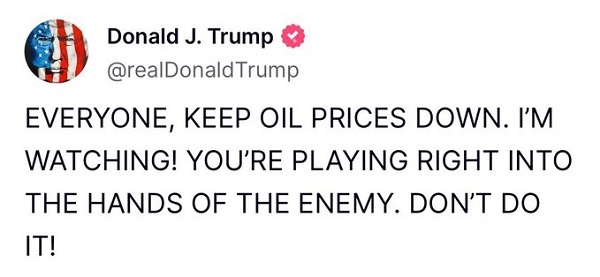
 Business2 days ago
Business2 days agoTrump reins in oil markets with one Truth Social post
-

 Alberta21 hours ago
Alberta21 hours agoSo Alberta, what’s next?
-

 Health21 hours ago
Health21 hours ago‘Transgender’ males have 51% higher death rate than general population: study
-

 conflict2 days ago
conflict2 days agoWar over after 12 days? Ceasefire reached between Israel, Iran
-

 Alberta2 days ago
Alberta2 days agoAlberta poll shows strong resistance to pornographic material in school libraries
-
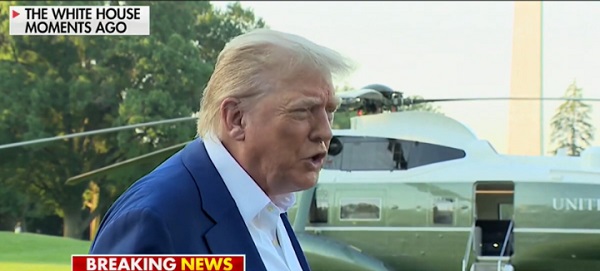
 conflict1 day ago
conflict1 day ago‘They Don’t Know What The F*ck They’re Doing’: Trump Unloads On Iran, Israel


